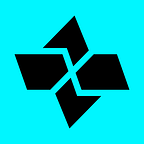Meet the Founders
Diego Nehab, PhD — Cartesi CTO
The future of smart contracts is evolving at a rapid pace and, as the DeFi space booms and Ethereum stretches under the pressure, we have been working hard to design and implement solutions that will push the boundaries of software development and open the floodgates for mass adoption.
As part of our “Meet the Founders” series, we want to let you see the people behind the Cartesi project — the people that want to make the power of blockchain and smart contracts available to developers around the world by building a whole new type of platform and ecosystem.
This week we say hello to Diego Nehab, Chief Technology Officer at Cartesi.
Diego comes from a background rich with education and experience in the fields of computer engineering, graphics processing, and software development, having graduated from Princeton University. Diego has worked at a multitude of organizations, including for Microsoft Research as a post-doctoral researcher.
As well as designing the future of smart contract development at Cartesi, Diego is also an Associate Professor at the IMPA (Institute for Pure and Applied Mathematics), a world renowned research institution and a graduate school for mathematics.
What made you get into blockchain?
I keep track of new developments in Computer Science as part of my research work and also because I am a technology enthusiast. I had a cursory understanding of blockchains when Augusto approached me with the problem of interactive verification.
The more we discussed, the more we realized that this was only the tip of the iceberg. It became clear that we should try to develop some of our ideas and put them out directly to the public, rather than simply publishing academic research on it.
This is how Cartesi was born.
What do you see as the industry’s biggest bottleneck to mainstream adoption currently?
Other than the sky-high fees and the congestion? I think this is where most of the community has been focusing, and it has become a serious problem especially ever since DeFi applications gained so much popularity. As a computer engineer, however, I think that the biggest bottleneck in blockchain adoption is the chasm that developers and users experience when moving from the centralized world to the decentralized world.
“Users want convenience. Developers want to be productive. At Cartesi, we are working to close this gap.”
How do you see Cartesi helping to address these issues in order to build the bridge between mainstream and blockchain?
We are hard at work making sure developers can, when they start developing for blockchains, use the same tools they know and love when coding centralized applications.
Our key products not only boost the computational power of smart contracts by several orders of magnitude, and reduce transaction costs, but also enable these smart contracts to run under a well established operating system. This means developers can use the tools of their trade to create their blockchain applications, and that users can have experiences similar to what they have come to expect when interacting with their computers and cellphones.
What do you see the next 5 years in smart contract development looking like for Cartesi?
It is hard to predict what will happen in the blockchain world. Nevertheless, I am certain that, if blockchain use is ever to become widespread, it needs a solution similar to what Cartesi is offering.
The centralized world will never cede space to solutions that are less powerful, more restrictive, and less convenient. In the next 5 years we will release a variety of technologies that will support smart contracts running on Linux, free of the idiosyncrasies of blockchain runtimes and programming languages. We will show why reinventing the wheel is a bad idea.
What has been the most memorable moment for you working in the space in the last 5 years?
It’s been a roller coaster. I never worked in a field that moves so quickly and that is so subject to large swings in popularity. I think that our launch at Binance was the most memorable moment, because it was the first indication we would survive long enough to deliver on our ideas.
Name another project you think could help shape the future of blockchain besides Cartesi? (a chance to talk about partners perhaps?)
I can’t reveal any specifics, but I can say that Cartesi is developing two types of partnerships. First, we are joining forces with a variety of layer-1 projects so they can offer our layer-2 scalability solutions. The first projects to benefit from this effort will be those that are compatible with EVM. Those required custom integrations will come later.
The other type of collaboration involves companies that are working on products that can benefit from our scalability solutions. We are in the process of selecting the best candidates to concentrate our efforts.
We hope that this article helps the Cartesi community to have a deeper look at the team behind the brand. We are already humbled that so many people understand the Cartesi team’s vision for the future of DApps, smart contracts and software development and we are excited to watch the community and Cartesi ecosystem grow over the coming months.
As we expand operations this year and deliver on the milestones outlined in 2021 our roadmap, we expect to welcome many new faces from both inside and outside of the blockchain developer community to the Cartesi family.
Cartesi’s Ecosystem Links:
Website: https://cartesi.io
Explorer: https://explorer.cartesi.io
Discord (Development Community): https://discordapp.com/invite/Pt2NrnS
Twitter: https://twitter.com/cartesiproject
Telegram: https://t.me/cartesiproject
Telegram Announcements: https://t.me/cartesiannouncements
GitHub: https://github.com/cartesi
